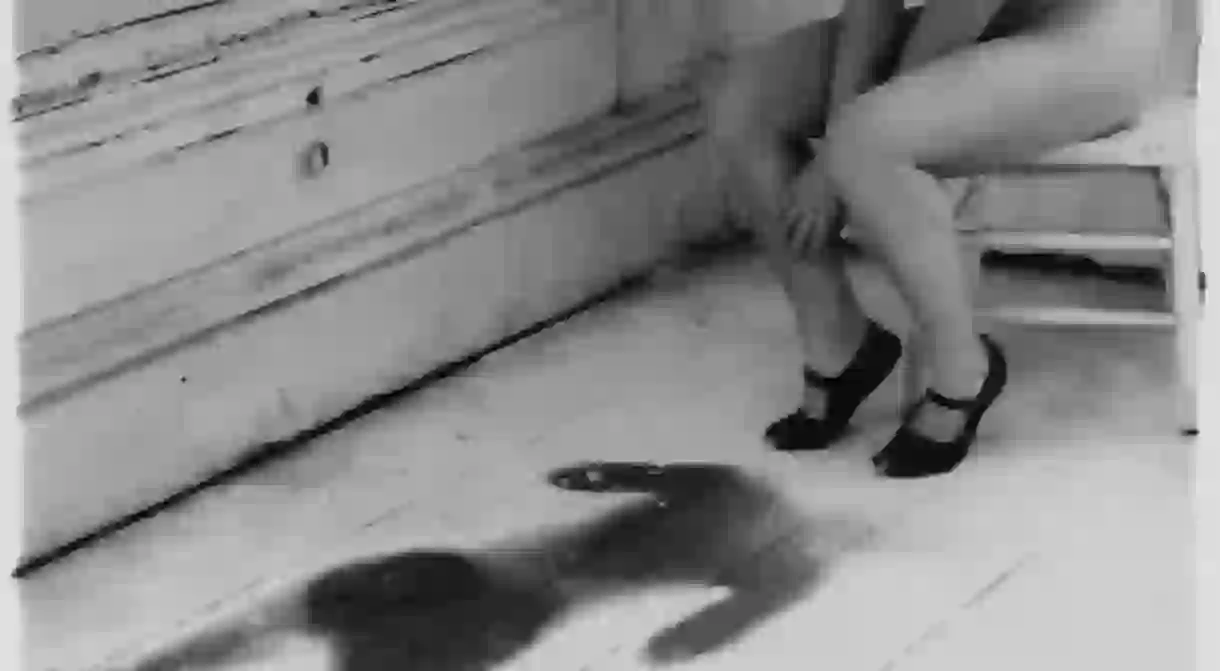Haunted Genius: The Tragic Life and Death of Francesca Woodman

New York artist Francesca Woodman’s heart breaking life story has often obscured the quality of her work, which in its haunting effervesce challenges the viewer’s perception of the artist and her medium. Michèle Kieffer questions whether Woodman’s evocative work can be divided from the darkness of her life.

Almost every article written about Francesca Woodman (including this one) mentions the photographer’s suicide at the age of 22. Her substantial body of work, composed of over 800 images, has always been seen in the context of her tragic life story. Discovered in 1986, 5 years after her death, Woodman has become an icon, a‘rock star’ of contemporary photography. The myth around her is certainly due to a simplification of her biography and her untimely death. Born in 1958 into a family of artists – her parents, George and Betty are successful sculptors and painters, her brother is a video artist and professor – Francesca grew up in Colorado and Massachusetts. Her parents inspired her to express herself artistically, and art making was always an important priority in the Woodman family. She spent her summers in Italy, where her parents owned an old Florentine farm. The bond she felt to the country is reflected in her choice to study in Rome during her junior year, while attending the Rhode Island School of Design from 1975 to 1978.

Francesca Woodman started to take pictures when she was fourteen and from that age on, she would constantly work on her art and on her career. Her friends and family described her as extremely driven, ambitious and conscious of the image she created of herself. Fragile and vulnerable, but at the same time gifted and convinced of her talent, Woodman was passionate about her work. She wanted recognition and was sure, especially while living in New York City after college, that she deserved it.
The artist primarily worked in series of black and white photographs. Her palette reaches from a rich black to a brilliant white and seams to play with every shade of grey the color has to offer. George Woodman describes his daughter’s work as ‘organised drama’. Sensual, playful and sometimes obscure, Woodman’s pictures explore the human body, but always in relation to its surroundings. She mixes elements of theatre and performance and seems close in spirit to surrealism. The represented bodies seem to be in a constant dialogue with the encircling objects. They repeatedly merge with, hide in or behind them. Although she often turned the focus of the camera on herself, especially during her first active years, it is a common mistake to think that Woodman exclusively created self-portraits. She did work with a lot of different male and female models, people that she knew intimately. The different individuals are often difficult to identify, because of the long exposures she uses. Their movements are captured by the camera and translated as blurry shadows in the pictures.

Except for these representations of movement, the photographs are very precise and allow the viewer to see every little detail of the decor. Woodman’s photographs can give a first impression of emptiness, but upon closer inspection, their sharpness unveils details in the clothing, furniture or walls. Polka Dots (1976) for example, shows the artist in front of a white wall as she kneels, looking directly into the camera. The poor state of the house creates an almost ornament like pattern on the floor. The dirt and tapestry on the wall cause the eye to look at the whole picture. If Francesca Woodman is interested in representing the body, she pays as much attention to the surrounding area. The different materials: cloth, stone, soil, wood or even hair, are represented with an extreme attention to detail.
It is understandable that Francesca Woodman’s work and her life are rarely analysed separately. The question remains however, if Woodman’s imagery reflects her interior and can therefore be read as the product of a psychologically sick person. It seems too simple to read her body of work like the diary of a depressed young woman. One of her well-known pictures, showing Woodman sitting naked on a chair next to the impression of a body on the floor, constitutes an interesting example. Critics often see the dematerialisation and disappearance of the body, more precisely Woodman’s body, in her pictures. A video taken by the artist while creating the body print on the floor shows her giggling and happy about the beautiful impression she has just created. She produces a trace, more precisely, she concentrates on the appearance of the body and not on its disappearance.
By Michèle Kieffer
Photos: GEORGE & BETTY WOODMAN and Marian Goodman Gallery













